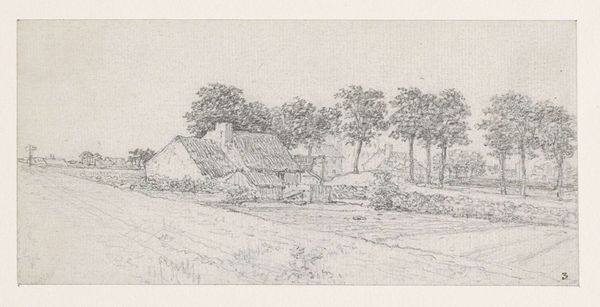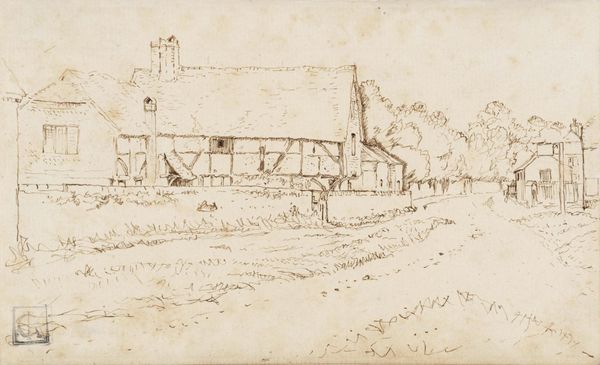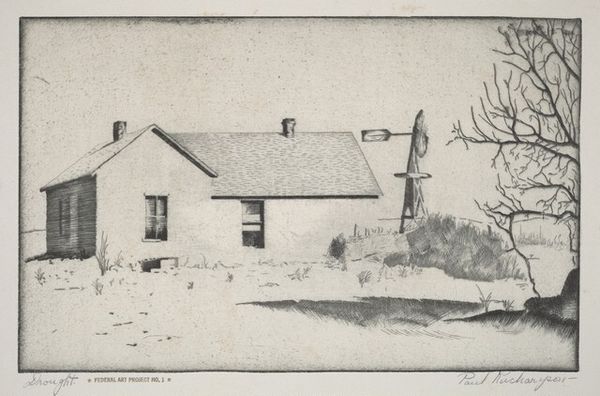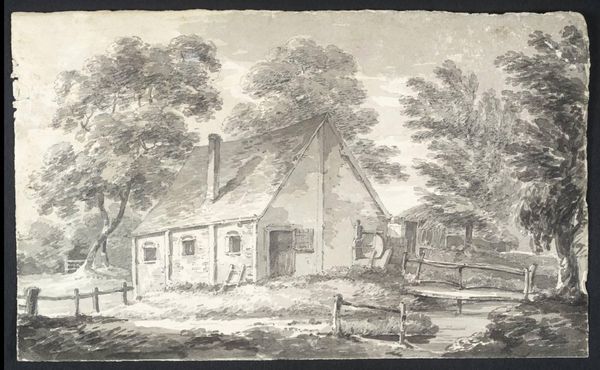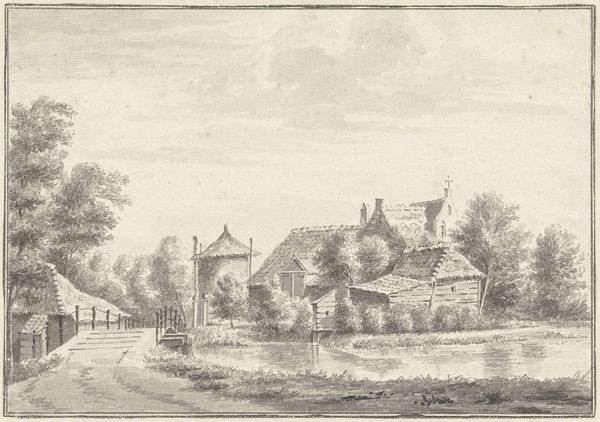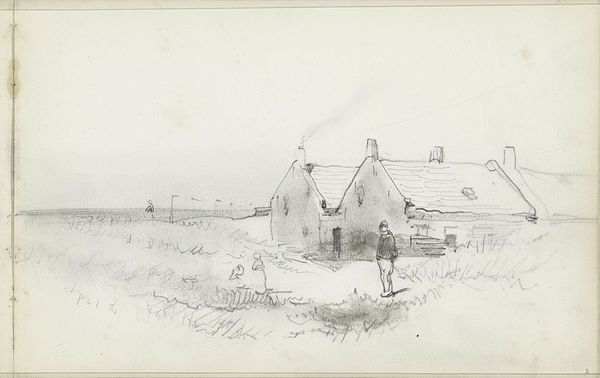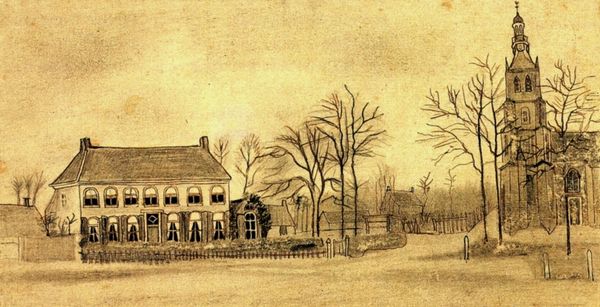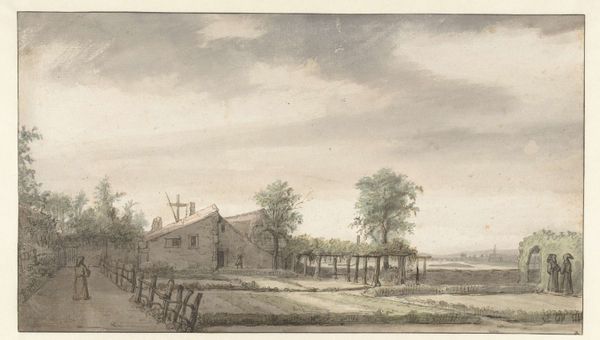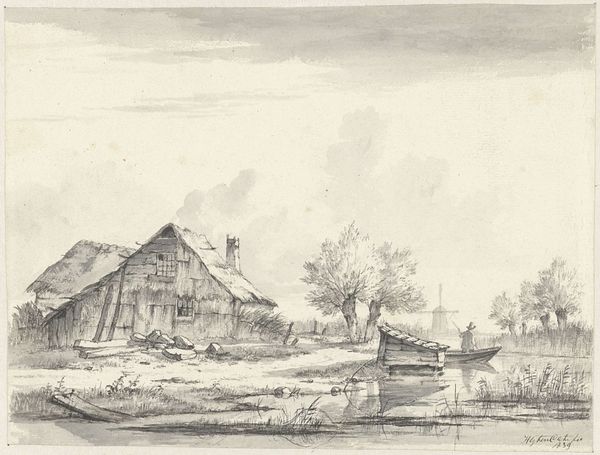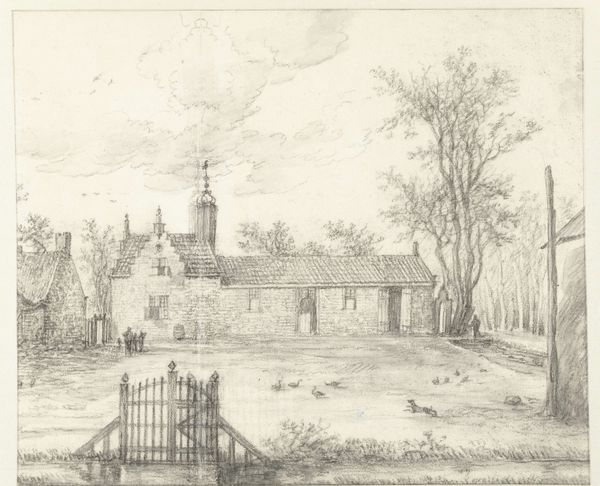
drawing, oil-paint, pen
#
drawing
#
impressionism
#
oil-paint
#
landscape
#
pen
Copyright: Public domain
Curator: This evocative pen drawing is entitled "Field with Factory." It's an 1888 work by Vincent van Gogh, now held at the Courtauld Institute of Art in London. Editor: Stark, almost bleak. The factory squats low on the horizon, and the field feels less fertile and more like parched stubble. It is a picture of early industrial society in what feels like very muted terms. Curator: Van Gogh’s landscapes often reflected the social tensions of his time. In this particular period, post-impressionist art often tried to show what they saw, rather than try to present art the way that it had previously been presented. Editor: The drawing presents that tension in the image. We have a lone figure in what looks like a cart moving slowly past a factory. The figure is rendered far less prominently and less confidently than the solid lines that render the building. What about that smokestack image; how do you read its inclusion? Curator: The inclusion of that smoke stack is intentional, and you may find that it reflects broader social trends of that era. Editor: Yes, the symbol of a factory can carry a great deal of symbolic baggage – power, industrial might, progress – but also, displacement, alienation, and pollution. In the same way that we can trace the image of nature, untrammeled nature, we can trace that smoke stack throughout multiple eras and through time as it continues to signify new ideas and innovations and problems as time continues to move onward. Curator: That smoke stake, in its place, can also act as commentary on the encroachment of industry on rural life. Editor: The field dominates the foreground, rendered in a simple way. Are these just individual blades of grass or rows after the harvest? And is Van Gogh inviting us to feel the unease that he must have felt between this pastoral life and a quickly-developing industrial culture? Curator: Perhaps the goal here isn't an outright condemnation, but instead this act is a portrayal of that transition. Editor: It's interesting how art allows for and often requires multiple valid, often opposing, viewpoints. It's this flexibility of view that opens new worlds for those engaging with art. Curator: Yes, ultimately, “Field with Factory” presents us with a microcosm of a changing world, one in which viewers are challenged to grapple with a question that remains highly relevant today, even now.
Comments
No comments
Be the first to comment and join the conversation on the ultimate creative platform.
